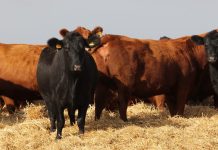Beer is one of the oldest and most widely consumed alcoholic beverages in the world and is third overall of the most popular liquids consumed, after water and tea. The beverage is also believed to also be one of the oldest fermented beverages.
Beer is brewed through the saccharification of starch and the fermentation of sugar, with hops being added as flavouring, to act as a preservative and also to add bitterness to the beverage. Starch and saccharification enzymes are obtained mostly from malted cereals, such as malted barley or malted wheat.
Although the brewing process involved in the production of all forms of beer is similar, variations in the use of hops, flavouring with herbs or fruit, fermentation method, aging and the like, has led to a wide variety of beers, most of which are both commercially brewed and home brewed.
Lager and ale
Two main groups of beer include lager and ale, and these groups may be even further sub-divided. Ale can for example include brown ale, pale ale, Scotch ales, mild ale, Burton ale, old ale and Belgian ales. Ale is brewed from malted barley using the warm-fermentation method with a strain of brewer’s yeast, and can be brewed without hops, unlike standard beer.
Lager is brewed using the cool fermentation method. The brewers’ yeast ferments the beer quickly, which gives the product a sweet, full-bodied and fruity taste.
- Mild ale: Mild ale is described as a low-gravity beer, with a predominantly malty palate which is mainly dark coloured with an alcohol by volume (ABV) of between 3% and 3,6%, although some stronger varieties have an ABV of 6% or higher.
- Pale ale: Pale ale is produced through warm fermentation and the use of mainly pale malt. It is recognised as one of the world’s leading beer (ale) styles. The lighter colour of pale ale is a result of the higher proportion of pale malts used in the brewing of the ale, while the different ranges of taste and strength is determined by different brewing practices and hops levels.
- Porter: Porter is a dark style originated in London during the 18th Its name originating due to its popularity with street and river porters during this period. Porter is descended from brown ale which is a well-hopped beer made with brown malt.
- Stout: Stout dark and is with roasted malt or roasted barley, hops, water and yeast and which includes a large number of varieties.
- Old ale: Old ale is a term generally used in England that refers to dark, malty beers above 5% ABV. It is also applied to dark ales of any strength in Australia. The term “old ale” is also associated with stock ale, which indicates a beer that has been held at the brewery and aged for a far longer period of time. Stock ale is historically the brewery’s very aged ale which is used to add an old quality, and perhaps also acidity, to the ale blend.
Fruit beer
Fruit beer is produced through the addition of an adjunct. An adjunct is defined as an unmalted grain such as corn, rice, rye, oats, barley or wheat, or a fruit or vegetable, which is used in brewing to supplement the main mash ingredient. Adjuncts are added to the fermenting process to cut costs, to create an additional feature (for instance better foam retention) or as flavouring.
Lager
- Bock: Bock is classified as a strong lager with its origin in Germany. Several sub-styles of the traditional bock are available.
- Pilsener: Pilsener takes its name from the city of Pilsen in Bohemia in the Czech Republic, where it was first brewed in 1842. It is a type of pale lager which has a very light, clear colour that ranges from pale to golden yellow. It also has a very distinct hop aroma and flavour.
- Schwarzbier: Schwarzbier is a dark lager of German origin, which has an opaque, black colour with a full, chocolatey or coffee flavour similar to that of stout and porter. Schwarzbier is a bottom-fermenting beverage with an alcohol content ranging between 4,8% and 5%.
Sahti
Sahti is a Finnish beer made from a variety of malted and unmalted grains such as barley, rye, wheat and oats. It may also be produced from fermented bread which contains these grains instead of the malt itself. Traditional Sahti is flavoured with juniper berries as well as hops, with the mash being filtered through juniper twigs in a trough-shaped tun.
Small beer
- Low-alcohol beer has a low alcohol content and is intended to reproduce the taste of beer but without side effects of standard alcoholic beers, such as inebriation. Most low-alcohol beers are brewed as lagers, although there are some low-alcohol ales available.
- Non-alcoholic beer has an alcohol content of not more than 0,05% ABV and is intended to reproduce the taste of beer but without the side effects of standard alcoholic beers, such as inebriation. Most non-alcoholic beers are brewed as lagers, although there are some non-alcoholic ales available.
Wheat beer
Wheat beer is brewed with the addition of a large proportion of wheat in addition to the regular malted barley and is usually top-fermenting beers. The main varieties of wheat beer are witbier, which originated with the Belgian tradition of adding flavourings such as coriander and orange peel to the brewing process, and weissbier, which is based on the German tradition of mixing a minimum of 50% wheat to the barley malt to achieve a light coloured top-fermenting beverage.
The Belgian variety of white beer is usually made with raw un-malted wheat, whereas other varieties are made with malted wheat. Wheat beers are marketed as spring or summer seasonal products. – Theresa Siebert, ARC
The manual Agro-Processing of Fermented Beverages – Beer contains complete information on the products discussed above, as well as many other processing methods, and is available from the Agricultural Research Council’s Institute for Agricultural Engineering (ARC-IAE).
Contact Elmarie Stoltz on 012 842 4017 or email stoltze@arc.agric.za for more information.







